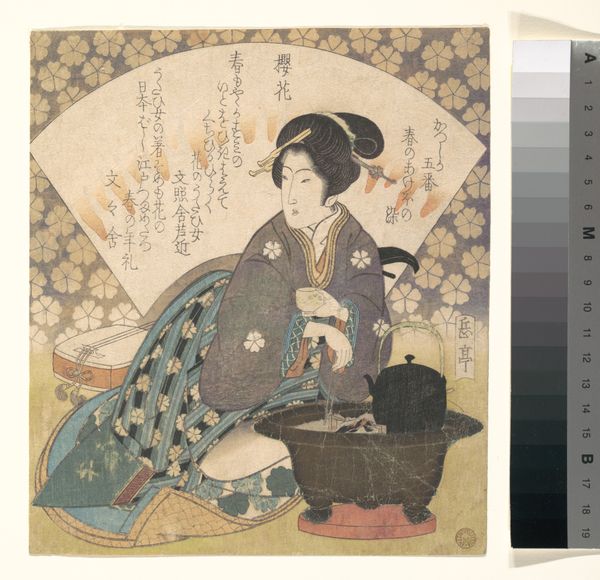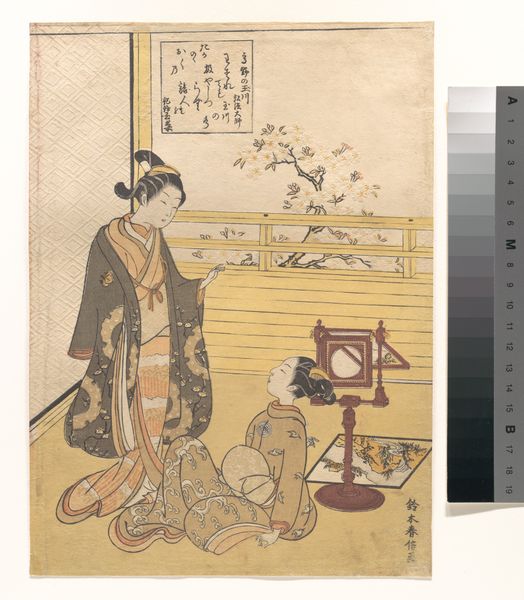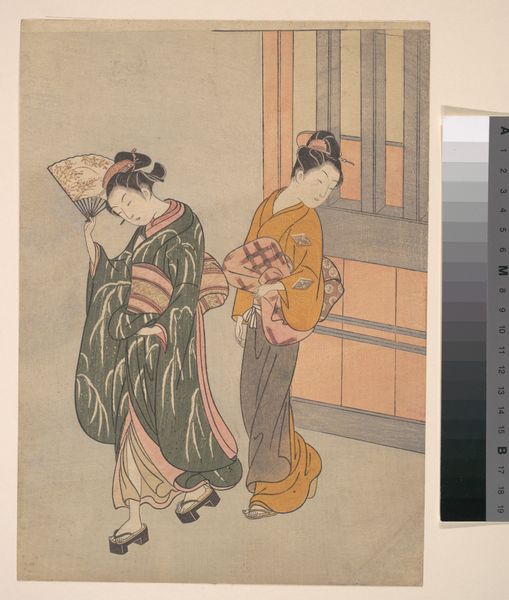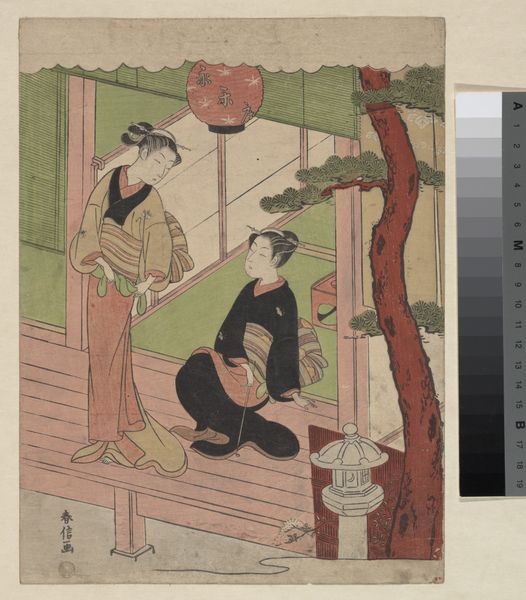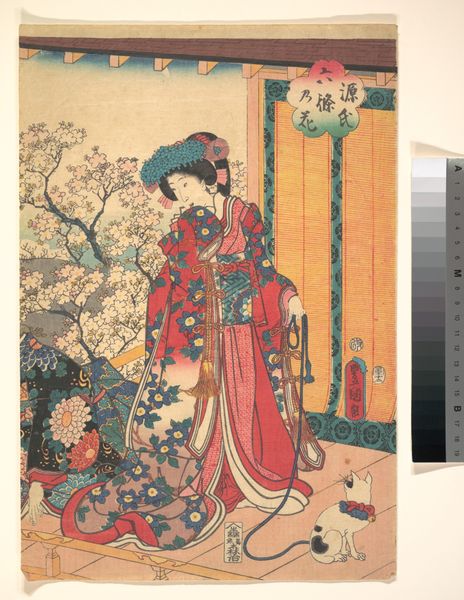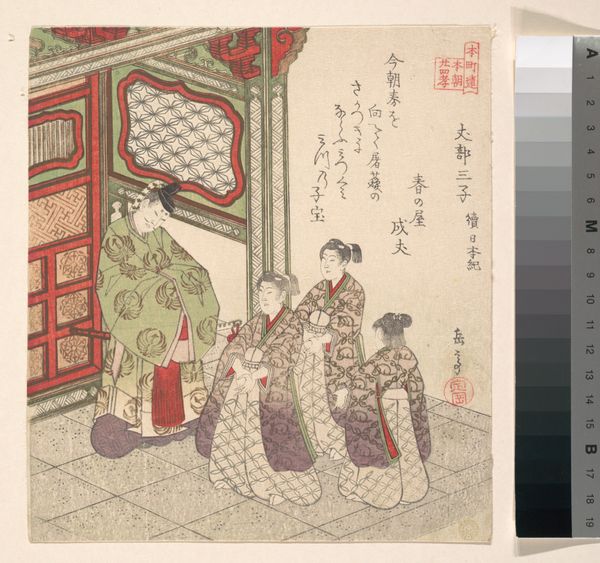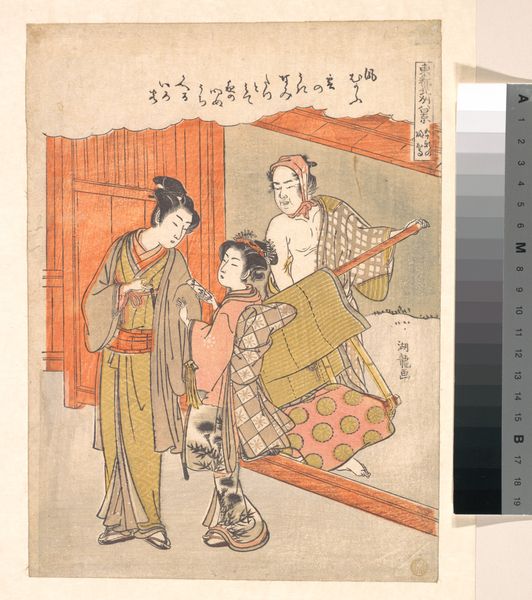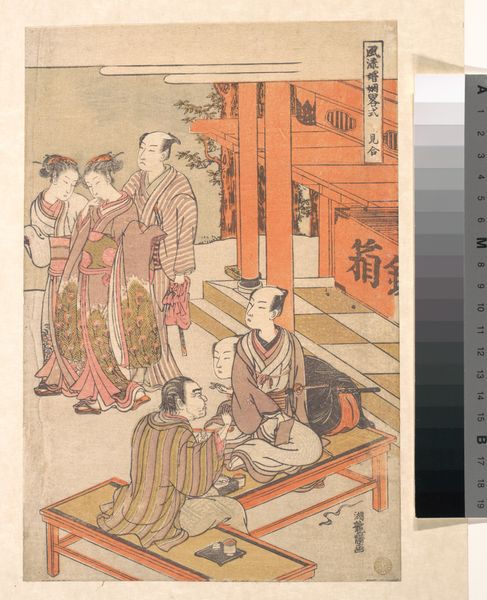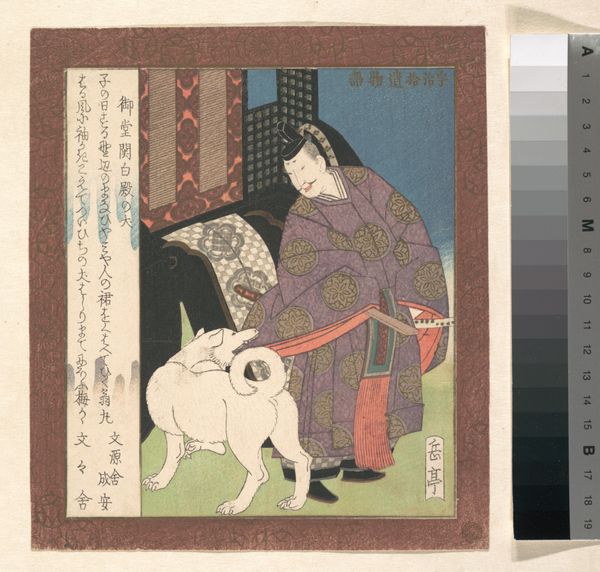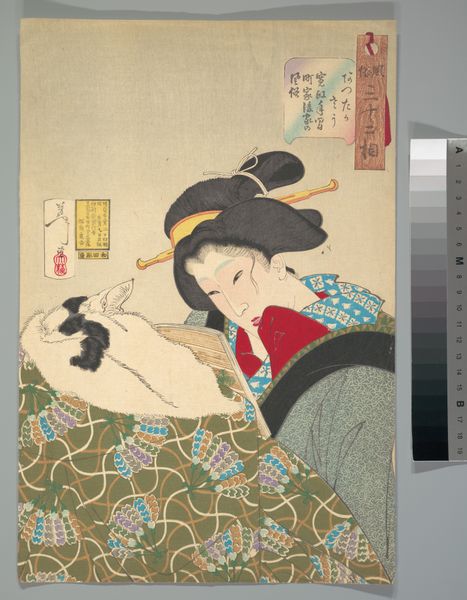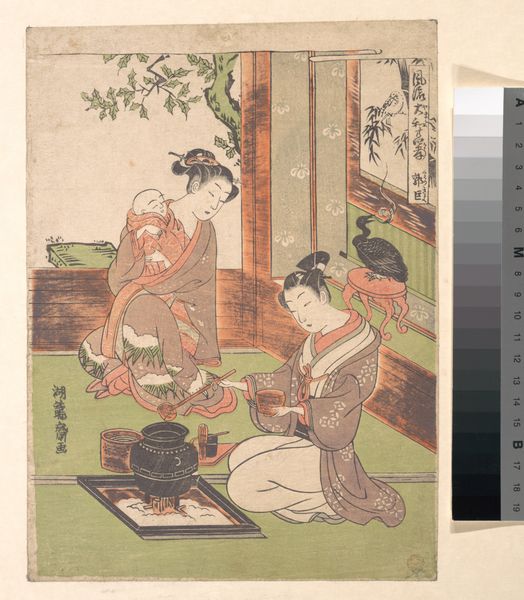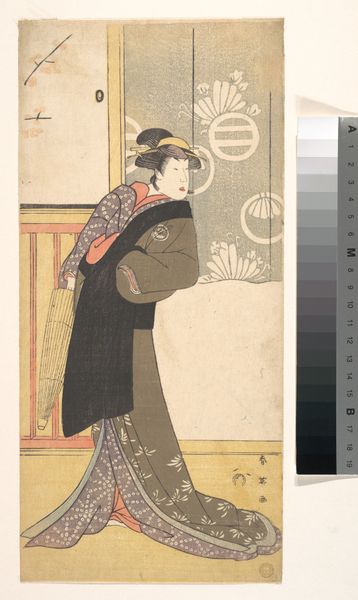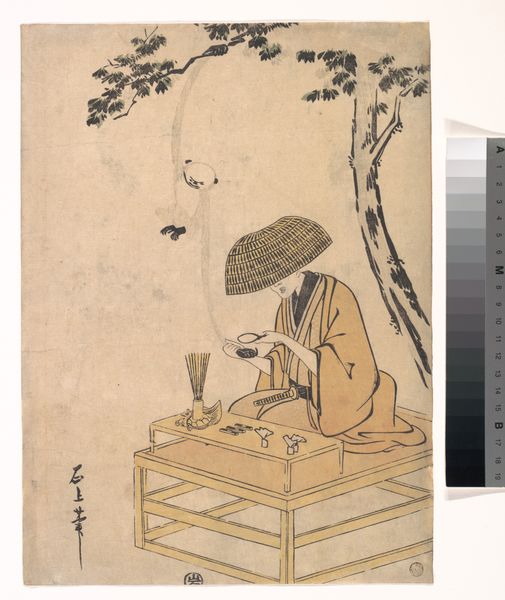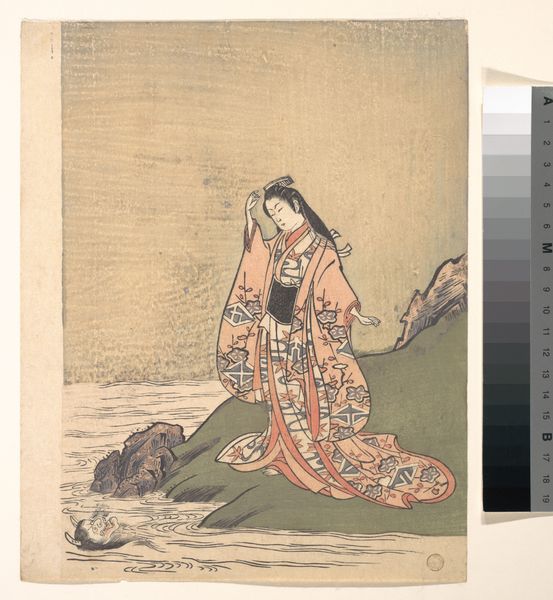
A Lady About to Write a Poem 1810 - 1830
0:00
0:00
print, woodblock-print
#
portrait
#
water colours
# print
#
asian-art
#
ukiyo-e
#
japan
#
woodblock-print
Dimensions: 8 5/16 x 7 5/16 in. (21.1 x 18.6 cm)
Copyright: Public Domain
Curator: We're looking at Yashima Gakutei’s woodblock print, "A Lady About to Write a Poem," created sometime between 1810 and 1830. It’s a serene piece, part of the Ukiyo-e tradition, now residing here at the Met. What’s your first take? Editor: A quiet moment, definitely. She’s caught between worlds, it feels like – the peacock feathers adding this slightly surreal touch. It’s got that classic Japanese aesthetic, but there’s something deeply personal radiating from it. It feels so introspective. Curator: Let’s consider the labor embedded in it. Creating a print like this demanded exceptional skill. The woodblock carving, the layering of colors, and even the paper production involved intense specialisation within workshops and complex economic exchanges of materials. How does this affect the viewer? Editor: Knowing that elevates it, right? It transforms it from a simple portrait into a collaborative dance of artisans, all working to capture this woman’s stillness. The labor intensifies the aura surrounding it. It's almost meditative when I try to imagine their hands in the process. Curator: I agree completely. Look at the way her kimono is rendered, too – so many colors layered, indicating status and taste. And consider the literary pursuits signaled by her pose, linking to a rich world of poetry and refinement, both accessible through material items and embodied talent. Editor: Absolutely! Those layers tell a story beyond the image itself. Like a keyhole, giving us only a sneak peak into what she will produce with the instruments set out before her. Do you think it has social context that applies today, given its age? Curator: Absolutely! The Ukiyo-e tradition often depicted the floating world: pleasure districts, actors, courtesans, all swirling within the urban centres of Edo-period Japan. But images like this also represent cultivated taste and status – not unlike the ways people use consumption and hobbies for modern social climbing. We still project those ideas on items today, only difference being that you and I discuss a ukiyo-e. Editor: So, we're basically time travelers! It shows how the underlying narratives of our choices transcend time and culture, maybe? I came expecting a pretty picture and instead discovered something speaking volumes about cultural values that are persistent in art. Curator: Exactly. Hopefully, visitors leave thinking more critically about art production, its place in systems of commerce, its relationship to labor and skill... Editor: And the dreams and worlds captured by art!
Comments
No comments
Be the first to comment and join the conversation on the ultimate creative platform.
